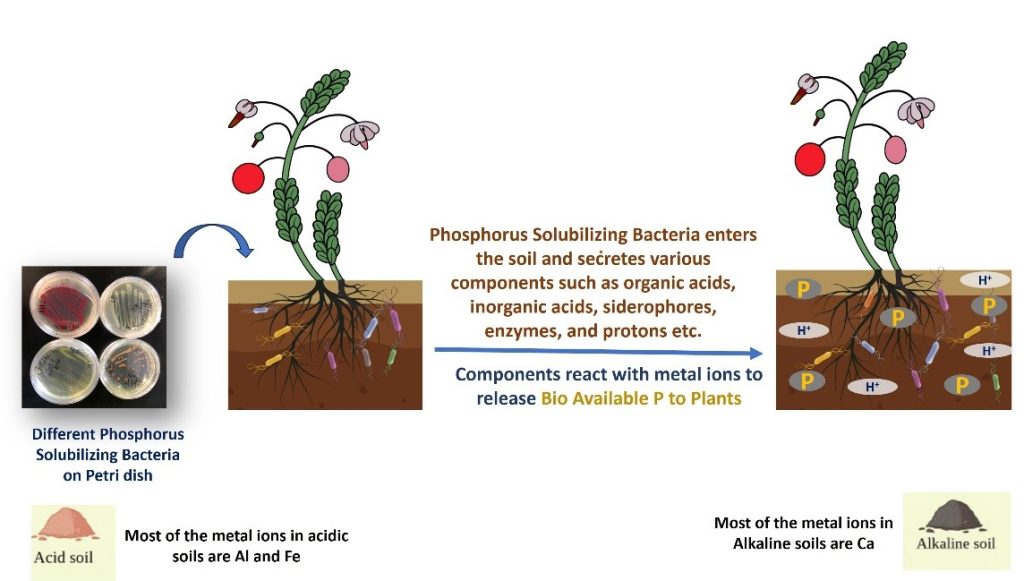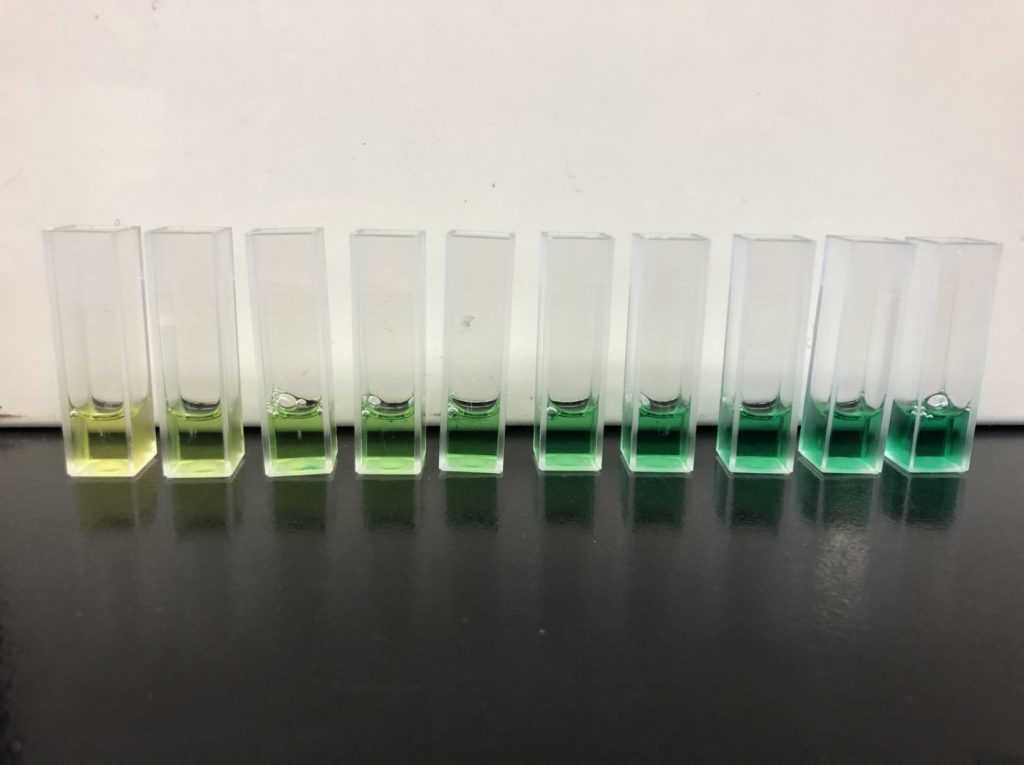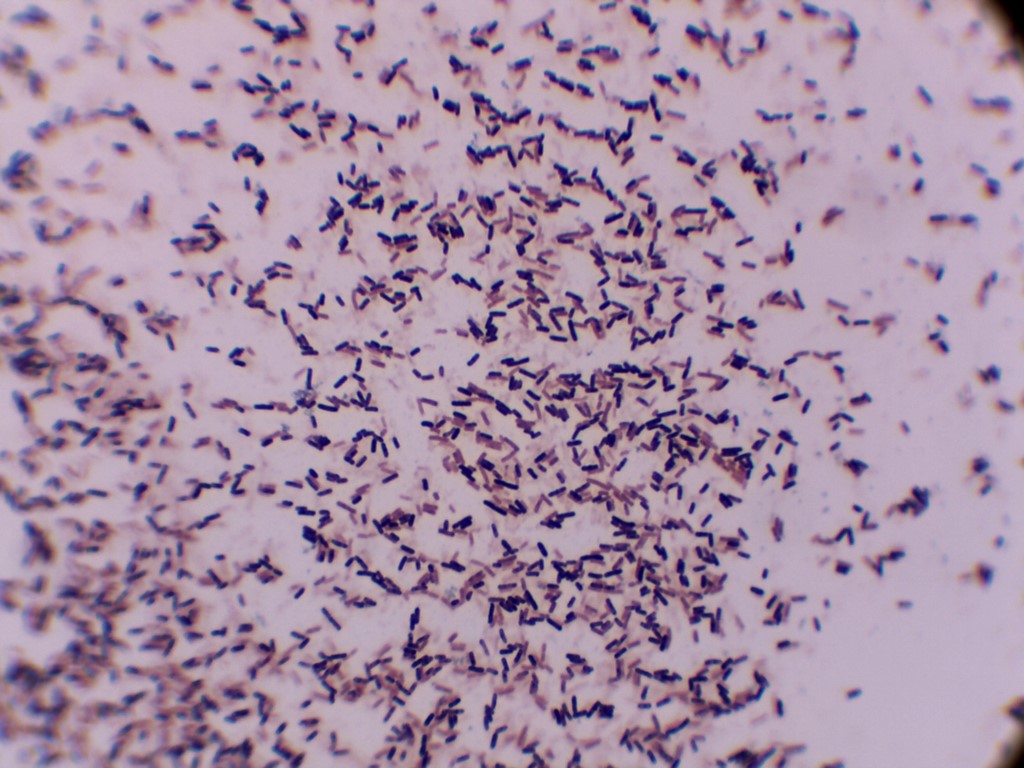A Potential New Tool for Phosphorus Management: Phosphorus Solubilizing Bacteria
The phosphorus that cranberries take up serves many important roles in cranberry plants. Phosphorus is an important part of holding together cells, storing, and using energy, and forming part of the backbone that holds DNA together. Phosphorus plays a key role in photosynthesis, sugar metabolism, cell division, cell enlargement and it also promotes root growth and cold hardiness. However, annually applied phosphorus is not usually very available to vines and can build up in unavailable forms in the soil over time. Because cranberry soils are acidic, phosphorus is more likely to react with iron and aluminum to precipitate and become unavailable to the plants, a phenomenon similar to hard water leaving precipitated calcium on a faucet (Parent and Marchand, 2006). There are also likely to be some organic forms of phosphorus that build up in the soil with leaf drop and other organic matter but don’t decay readily into usable forms, and some calcium phosphate in high pH cranberry soils.
Iron, aluminum, calcium, and organic phosphates can dissolve into the soil and feed plants, but this reaction is typically very, very slow. However, some bacteria will dissolve these forms of phosphorus, making them available to the plant more quickly. Applying these bacteria directly to the soil could help reduce the need to add phosphorus fertilizer by making available phosphorus that is already present.
We have isolated 90 different types of soil bacteria that can perform this reaction in petri dishes and test tubes. We confirmed and measured this using a malachite green dye (BioAssay Systems, 2021), which changes color from yellow to green at a measurable rate when phosphorus is dissolved in water, pictured below (Figure 2). We are preparing to test their ability to dissolve unavailable phosphorus precipitates in greenhouse trials. After amending the soil with precipitated phosphorus chemicals, we will confirm that the plant is utilizing more phosphorus than what liquid fertilizer alone could explain.

We hope to use these bacteria, as well as the information we gain from them, to add more tools for managing soil phosphorus to the cranberry grower’s toolbelt.


Citations:
BioAssay Systems, Malachite Green Phosphate Assay Kit, 2021.
Chen, X.H., Koumoutsi, A., Scholz, R., Eisenreich, A., Schneider, K., Heinemeyer, I., Morgenstern, B., Voss, B., Hess, W.R., Reva, O. and Junge, H., 2007. Comparative analysis of the complete genome sequence of the plant growth–promoting bacterium Bacillus amyloliquefaciens FZB42. Nature biotechnology, 25(9), pp.1007-1014.
Parent, L.E. and Marchand, S., 2006. Response to phosphorus of cranberry on high phosphorus testing acid sandy soils. Soil Science Society of America Journal, 70(6), pp.1914-1921.
Pan, L. and Cai, B., 2023. Phosphate-Solubilizing Bacteria: Advances in Their Physiology, Molecular Mechanisms and Microbial Community Effects. Microorganisms, 11(12), p.2904.
This article was posted in Cranberry and tagged Cranberries, Jessica Rohde, Jyostna Devi-Mura, phosphorus solubilizers.
